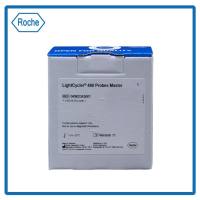cDNA Library Screening with the Tetramethylammonium Chloride (TM AC) Technique Using Highly Degenerate Oligonucleotide Probes
互联网
460
If an unknown protein is purified and available in relatively small amounts, it is possible to determine the sequences of short internal peptides (1 ). In order to determine the whole sequence of the protein by cDNA cloning, one of the peptides of perhaps five to seven amino acids may be reverse translated into nucleotide sequence resulting in a 15–21-base-long deoxyribonucleotide. Because of codon degeneracy, the number of possible oligonucleotides may be more than several hundred, which must be present in order to insure that the correct sequence is represented. The melting temperature in buffered saline solution of this mixture of oligonucleotides is heterogeneous due to differences in G + C content, as G:C base pairs possessing three hydrogen bonds interact more strongly than A:T base pairs with two hydrogen bonds. Thus, in buffered saline solution one usually chooses a melting temperature that is so low that the oligonucleotide with the lowest G + C content can hybridize. However, in doing so it is possible that oligonucleotides with a higher G + C content may form stable hybrids with mismatches resulting in the cloning of artifact cDNAs. Even though this procedure has been used successfully (2 –4 ), it is more convenient to use a different buffer type that contains tetramethylammonium chloride (TMAC), as it has been reported that this salt selectively binds to and stabilizes A:T base pairs so that their melting temperature becomes similar to that of G:C base pairs (5 –7 ).









